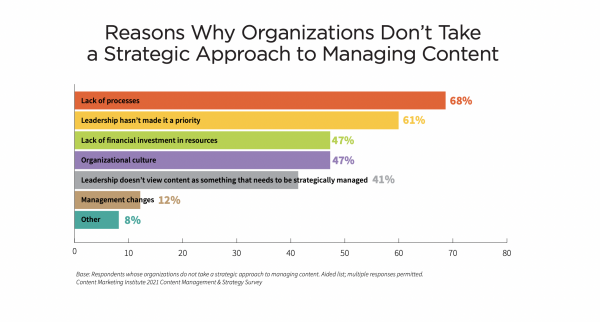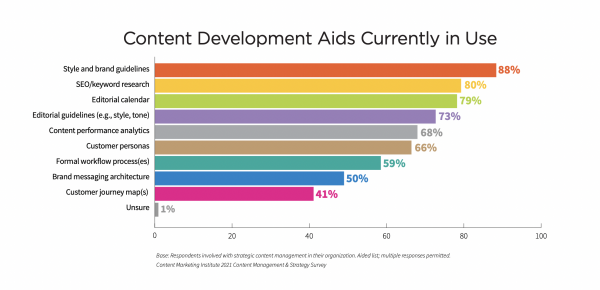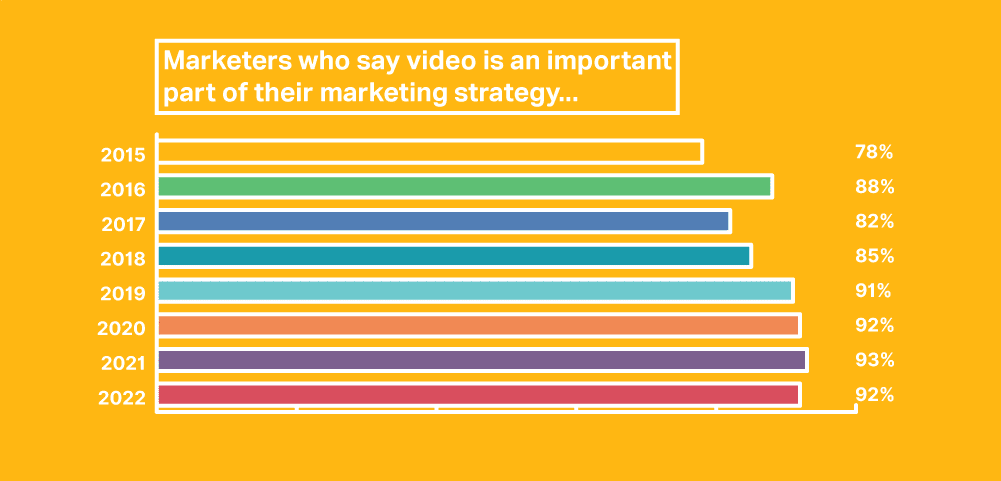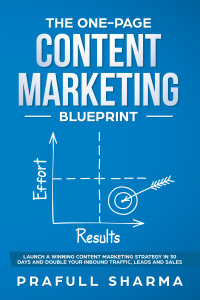A Roundup of the Latest Content Marketing Statistics You Should Know
When someone asks: what’s going on with marketing these days? It’s hard to give a definitive answer. Content marketing is in a constant state of flux—evolving, changing, expanding, and reinventing itself.
To help you keep your finger on the pulse of what’s effective in this space, we’re rounding up the latest content marketing statistics that every marketer should know. We’ve divided it into sections that focus on content marketing adoption stats and trends to give you a clearer picture of how content marketing is being implemented.
1. Almost Half of Marketers, 48%, Are Expecting Their Budget to Rise in 2022 [Source]
The events of the past few years demonstrate the importance and relevance of marketing for businesses. Online visibility became critical during a time when people relied heavily on online presence and availability as consumer habits shifted significantly during the pandemic. It’s no surprise that more businesses are investing in content marketing.
A downloadable report from DemandGen notes that consumers will typically consume three to five pieces of content before they engage with a brand or vendor. In other words, establishing a visible presence online and opening channels for engagement and interaction is critical to successful marketing.
2. If an Organization Has Not Taken a Strategic Approach to Content Management, It’s Because They Don’t See It as a Priority [Source]
Despite the proven value and significance of content marketing for businesses, 68% of organizations still don’t take a strategic approach to implementing content marketing campaigns for the company, largely due to a lack of processes in place and leadership not making content a priority.

This statistic says a lot about the opportunities a business can have if they take the time to streamline processes and fully implement content marketing strategies. If a company takes the time to implement content marketing workflows and processes it can ensure better consistency in production. If marketing teams highlight why content marketing should be a priority and get more budget to dedicate towards campaigns and initiatives, businesses can tangibly see the difference it will make to their company’s bottom line.
3. Content Marketing Can Generate More Than 3x as Many Leads Versus Outbound Marketing Efforts [Source]
More importantly, inbound marketing is also more cost-efficient. According to the same source, content marketing costs 62% less than traditional marketing and delivers more ROI.
For companies that want to maximize limited marketing budgets, content marketing is the way to accomplish that.
4. 62% of Companies Outsource Their Content Marketing [Source]
Only 35% of organizations invest in a dedicated, in-house person or team to work on content marketing full time. A lot of this has to do with a company’s effort to compete with blue chip enterprises that have larger marketing budgets. To stand out from the competition, all your online properties should be rooted in a solid marketing strategy that consistently publishes relevant, high-quality content that’s strategically optimized for searchability. This doesn’t even cover the time it takes to manage and maintain content and engagement on social media.
If you’re running your business yourself and intend to juggle the different responsibilities of a content marketer as well, it can be very overwhelming. It’s much better to find an outsourced partner who can capture your brand voice and communicate your company’s vision effectively through content so you and your team can focus on your core business operations.
5. These Top Content Development Aids Help Ensure Content Quality for Companies [Source]
Both companies and marketers recognize the value that content development materials provide when it comes to consistency of content quality.
Among the top materials being produced are brand and style guidelines. These can include everything from visual guidelines to typography and logo use, to writing style and tone benchmarks. This style guide can be used by team members and outsourced creative teams so you can ensure that your content stays uniform.

SEO and keyword research data are also key content marketing aids—and of course, editorial calendars are one of the most useful tools a content marketer can have when planning and implementing campaigns.
6. Audiences Are Still Skimming Content—Not Reading [Source]
As early as the 90s, marketers discovered that people don’t read anything word for word online. In the decades that have passed since little has changed with user behavior. In fact, with attention spans online getting significantly shorter, it’s more important than ever to format your posts to ensure the content you produce is skimmable and easily readable.
We discuss this in further detail in this post <insert link to relevant post> but basically, this statistic highlights how important it is to format your content strategically.
7. SEO Best Practices Say the Ideal Blog Post Length Is 2,100-2,400 Words [Source]
Here’s where it gets tricky. According to other studies, readers prefer posts to be 1,000 words or less. Even Hubspot (which has data to back their ideal blog post length) notes that their most popular posts have lower word counts.
What does this all mean?
A 2,000-word piece may be the best way to get algorithms to notice you and rank you higher in searches, but always remember that you’re still writing for real people. Our advice? Keep your readers happy, and focus on achieving your SEO targets through other methods and strategies outside of word count. For example, proper backlinking, adding alt-texts, having a solid keyword strategy, working towards achieving a high domain and topic authority, and ensuring that your posts are media-rich.
8. Marketers Consider Video a Very Important and Effective Marketing Tool [Source]
Today, 92% of content marketers consider video to be a very important part of their overall marketing strategy.

A lot of the traditional challenges that prevented marketers from using video are now being addressed. Video creation is now more accessible and more affordable. It’s as easy as pointing your phone towards your subject matter and pressing a button.
Additionally, 81% of marketers also say that videos have directly helped them boost their sales. Clearly, if you’re not leveraging what video can do for your brand, you’re missing out.
Where do you stand on all these content marketing statistics? Tell us what you think and share your thoughts in the comment section below.
If you want to learn more, reach out to us. Book a consultation or get started with Leadspanda to find out how we can help you.
For any questions, leave a comment below or check out our LinkedIn or Twitter.
Share This Story
2 Comments
Leave A Comment
Get the latest growth ideas, strategies, and best practices delivered to your inbox.
Quick read that helps 7000+ subscribers.










This article provides valuable insights on the latest content marketing statistics to help marketers make informed decisions.
[…] https://leadspanda.com/blog/a-roundup-of-the-latest-content-marketing-statistics-you-should-know/ […]